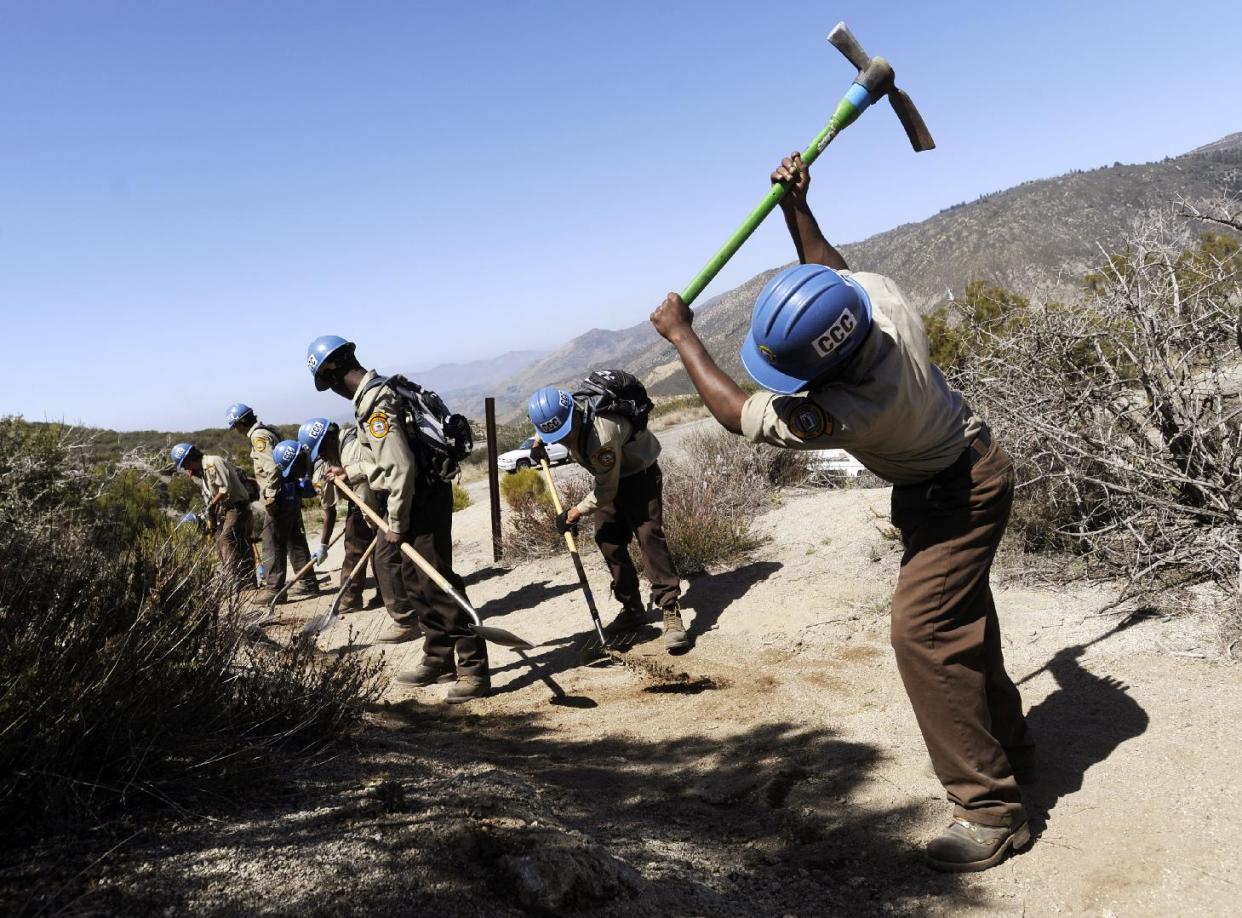Report: National forest trails poorly maintained

GRANTS PASS, Ore. (AP) — Shane Krogen has no trouble finding retirees willing to spend a week in the wilderness grubbing out rocks and swinging a pick or shovel to bring a hiking trail back up to national standards.
The hard part is getting the U.S. Forest Service to come up with a few thousand dollars to buy the volunteers a T-shirt and feed them well, which is all it takes to keep them coming back for more.
"The Forest Service will fund us when they can, if they've got the dollars," said Krogen, executive director of the High Sierra Volunteer Trail Crew in Clovis, Calif. "It's just a matter of their budgets being cut drastically."
A government watchdog agency has found that hiking trails on national forests suffer from a $314 million backlog in maintenance, with only a quarter of the 158,000 miles of trails meeting national quality standards.
"The Forest Service has more miles of trail than it has been able to maintain, resulting in a persistent maintenance backlog with a range of negative effects," said the report from the Government Accountability Office.
Annual funding has lagged far behind the need. In 2012, for example, trails needed $523.7 million for maintenance, operations and capital improvements, according to the report, yet received only $81.9 million. The gap in 2006 was similar, with $509.1 million of need, but only $74.2 million in funding.
The report adds that the Forest Service relies heavily on volunteers to maintain trails, but does not take full advantage of them. While the Forest Service manual sets a goal of using volunteers, the agency has not established that as an expectation of trails managers, and training on working with volunteers is limited.
In 2012, the equivalent of 667 volunteers working fulltime did $26 million worth of work, the report said. The volunteer effort was equivalent to the 667 full-time Forest Service employees working on trails.
The national system of recreational fees does little to fill the funding gap. The Forest Service told Congress last month it collects $66 million a year, mostly from campgrounds, cabins and picnic areas. The law authorizing the fee expires in December 2014.
Jim Furnish is a retired Forest Service deputy chief for the forest system. He says the problem goes back decades, and results from the Forest Service and Congress making recreation a low priority, with a low level of risk when the work doesn't get done.
"Part of the issue is the consequences of neglect are not seen as severe," he added. "People can usually get where they're going, just with difficulty."
Forest Service Chief Thomas L. Tidwell said in his formal response to the report that the agency agrees with the GAO's conclusions, and pledged to look for ways to close the funding gap and improve training. He said the growing need to fight wildfires and budget cuts both contribute to the problem.
Krogan said spending $600 for T-shirts and $2,000 for food will keep a crew of 50 volunteers working in the wilderness for five days. A paid crew would cost 20 times that.
Why would someone work so hard for so little?
"Most of us sit at a desk all week and at the end of the week have no tangible outcome for our effort," said Krogen. "Whether they are cutting out a tree or building rock steps, they have a sense of pride and ownership. 'Look what I was able to do, and I've never done this before. Now I'll be able to come through here and remember this day for the rest of my life.'"

